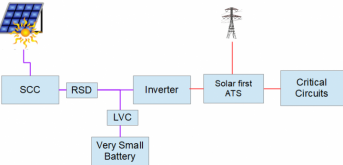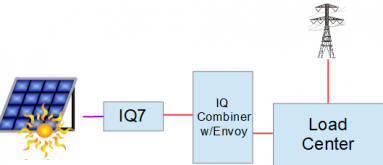Here is the data sheet for the Enphase iQ combiner 3. This is the unit I have. It is rated for outdoor use if that helps for your install. For my system, it is mounted next to my main breaker panel.
All that is needed from the microinverters on the solar panels is a 2 conductor cable that carries the current. The control and monitoring data is carried by powerline communication over the same cable. The combiner will take up to four 20 amp strings. This unit also needs to connect to the internet. It has an RJ45 ethernet port, and WiFi built in. Mine is pretty far from my router, and it would occasionally drop offline, so I installed a WiFi extender in my garage. I may run an ethernet cable later. It also has an option for a cell phone modem, but then there is a monthly charge for that. To be able to do the consumption measurement and zero export, you do need to add another pair CT's that install at the main feed and wire to the board inside of the iQ combiner. They are clamp on style and should fit around 200 amp feed cables. The setup is done with an app on a iOS or Android device. You can monitor the live operation with the setup app, but to get the nice history graphs and total production and consumption data, you use their cloud app Enlighten. If the system does not have an internet connection, it will still produce power without a problem.
The Envoy is the "smarts" of the system, and it is available as a separate unit, but the Envoy board and functions are built inside the iQ Combiner 3 unit. So there is not another device needed. Some people just choose to use a standard sub panel and the Envoy instead of the iQ Combiner. I like the combined unit, it makes for a simple clean install.
When running in the Zero Export mode, the Envoy board is monitoring the power consumption CT's and it sends data to the inverters to adjust the output to match your demand. Here is a paper on how that works.
This is all about Hawaii, because they have strict rules of no export due to a small power grid being overwhelmed with a lot of solar power systems.
I am not a dealer, and I get nothing for promoting Enphase. I own a system that I paid full price for, and I am very happy with the system. They are not the cheapest up front, but they are not much more expensive than even basic systems, once you figure in the rapid shut down and the system efficiency and reliability. My system has been up and running for 19 months, and it has produced 11.6 Mega watt hours. In my system, I have 16 inverters. None have had any issue yet, but if one did fail, I still have 15 others still making power. Check out their web site, and fee free to ask any questions.




